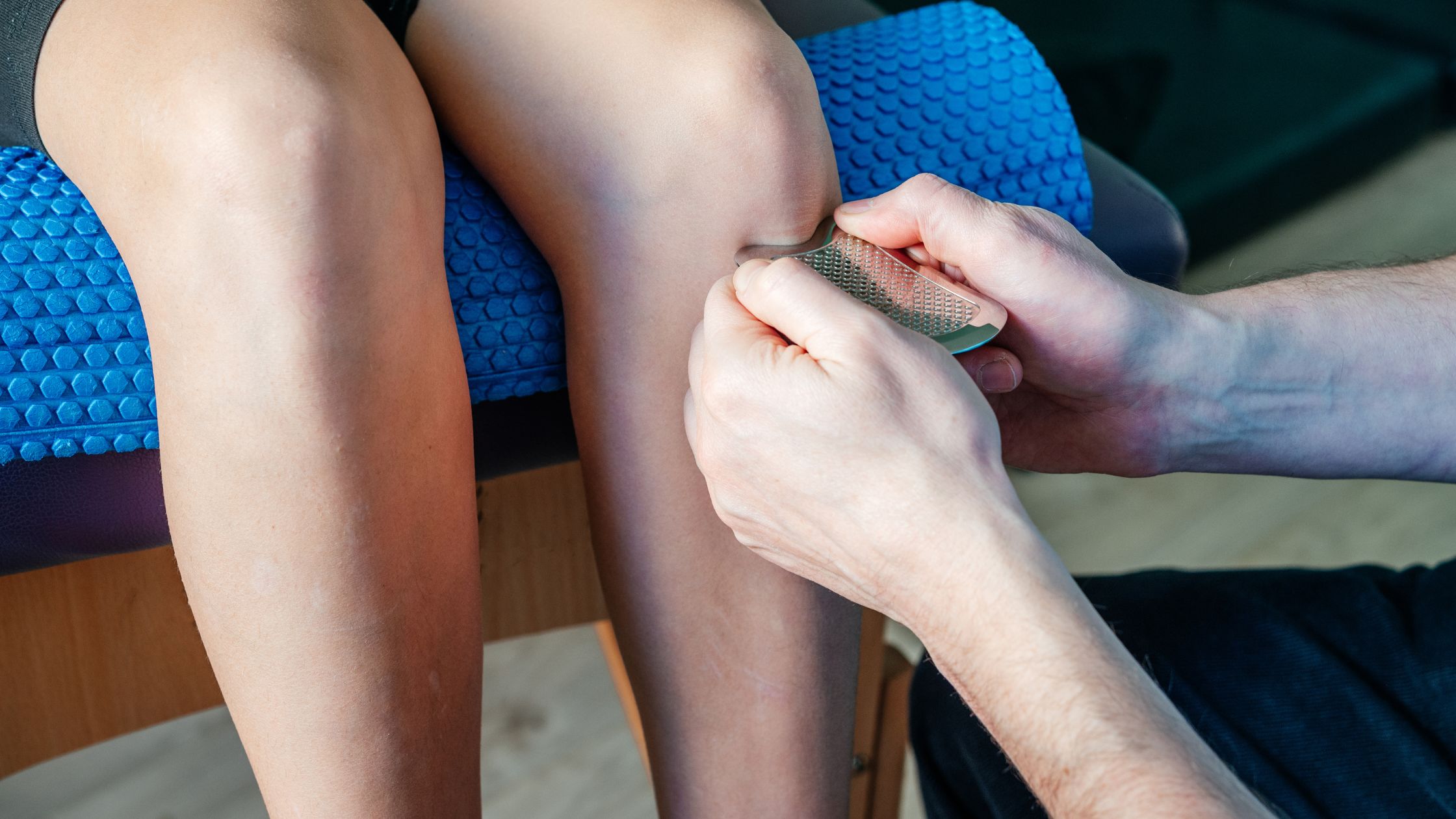Taking a Deeper Dive Into the Different Load Types
There are three main types of tendon loads that can apply to various parts of the body, but below, I will focus on lower extremity tendons such as the achilles, patella tendon (which is different than quad tendon!) and the hamstring tendon:
Tensile Load: This load represents the storage and release of energy by the tendon in a spring-like fashion. Jumping is a good example of tensile loading in the patellar tendon. Overloading this tendon is very common as players ramp up for pre-season or within the younger male athletic population.
Compressive Load: Compressive loading represents vertical forces applied by a bone on the tendon. Achilles tendon contraction from a fully dorsiflexed ankle position is a good example of compressive loading, as the calcaneal tuberosity applies a compression-like load on the achilles tendon. Overloading this tendon is often seen when training programs overload powerful movements from a dorsiflexed ankle, such as overdoing acceleration drills. We also see compressive loading with an increase in uphill running.
Friction/Shearing Load: A friction/shearing load represents a low friction-like load through a repetitive movement. The friction occurs between the tendon and its envelope, the peritenon. Repetitive motion between dorsiflexion and plantar flexion on a bike is a good example of this type of load.
One key concept to keep in mind here, which will be important throughout rehab, is to understand the distinction between “heavy load” and “low load”on a tendon. Heavy weights and long isometric contractions are NOT considered “heavy tendon loads,” though it is a heavy load for the muscle! Heavy tendon loading involves rapid stretching and shortening of the tendon. Velocity of contraction through the range of motion is the main driver in triggering tendon pain in activities like jumping, running, sprinting, and rapidly changing direction.
Understanding the Stages of Tendinopathy
Now that we know what activity triggered the tendon – and what the of load is at the source of the tendon pain – we must understand the stages of tendinopathy described by Jill Cook and other tendon research experts in order to best address our patient’s issue.
Reactive Tendinopathy: The first stage of tendon pathology. This is a short-term response secondary to an acute overloading stimulus. At this stage, the tendon may appear “swollen,” and imaging may not show significant changes while no evidence of matrix disruption is found. Pain is often the main symptom, which should subside within 48-72 hours of rest and removal of the triggering overload.
Tendon Dysrepair: The second stage of tendon pathology. This stage is often not recognized and follows shortly after the reactive stage. The can be thought of as “failed healing” where the relative response has not fully settled, the patient has not returned to pain free baseline and more irritating load is applied. At this time, fibrillary disorganization begins.
Degenerative Tendinopathy: The final stage of tendon pathology. At this stage, the tendon starts degradation secondary to continuous overloading and poor management. Matrix degeneration, collagen disorganization, and even cell death are all characteristics of this stage. As the degeneration further progresses, increase vascularization and nerve growth fill the spaces in the disrupted matrix. This increase in vascularization is the key finding on imaging to identify this stage and does not necessarily mean that pain is associated with this stage. The affected area will become silent and not transmit load which does not mean the tendon is getting weaker. The cross sectional area of the tendon will increase and the tendon will still be able to sustain great loading. This stage is irreversible.
Reactive on Degenerative Clinical Presentation: This specific presentation describes a patient with a history of tendon pain and pathology. On imaging, this patient will show an area of degeneration, collagen disruption, and increase vascularization, which is not the cause of their current symptoms. Additionally, this patient will present with classic signs of reactive tendon due to an overload of the remaining part of the normal tendon. When assessing and treating these patients, it is important for the clinician to understand the patient’s history and goals. In effect, returning to pain-free activity may not be feasible for this patient, but returning to their baseline soreness may be the targeted outcome. Since we know that the degenerative component is irreversible, the reactive aspect of this presentation is what we will focus on treating. It is crucial to remember that function and pain improvement are directly related to how we will effect load management in this patient.
Thank you all for reading. Please share your thoughts or questions, and I will follow up with Part 3, in which I address the rehabilitation approach for both achilles and patella tendinopathy.
* Information from this blog series was drawn from the Barça Innovation Hub Course – Lower Limb Tendinopathy merged with my personal experience on tendinopathy Return To Play.





